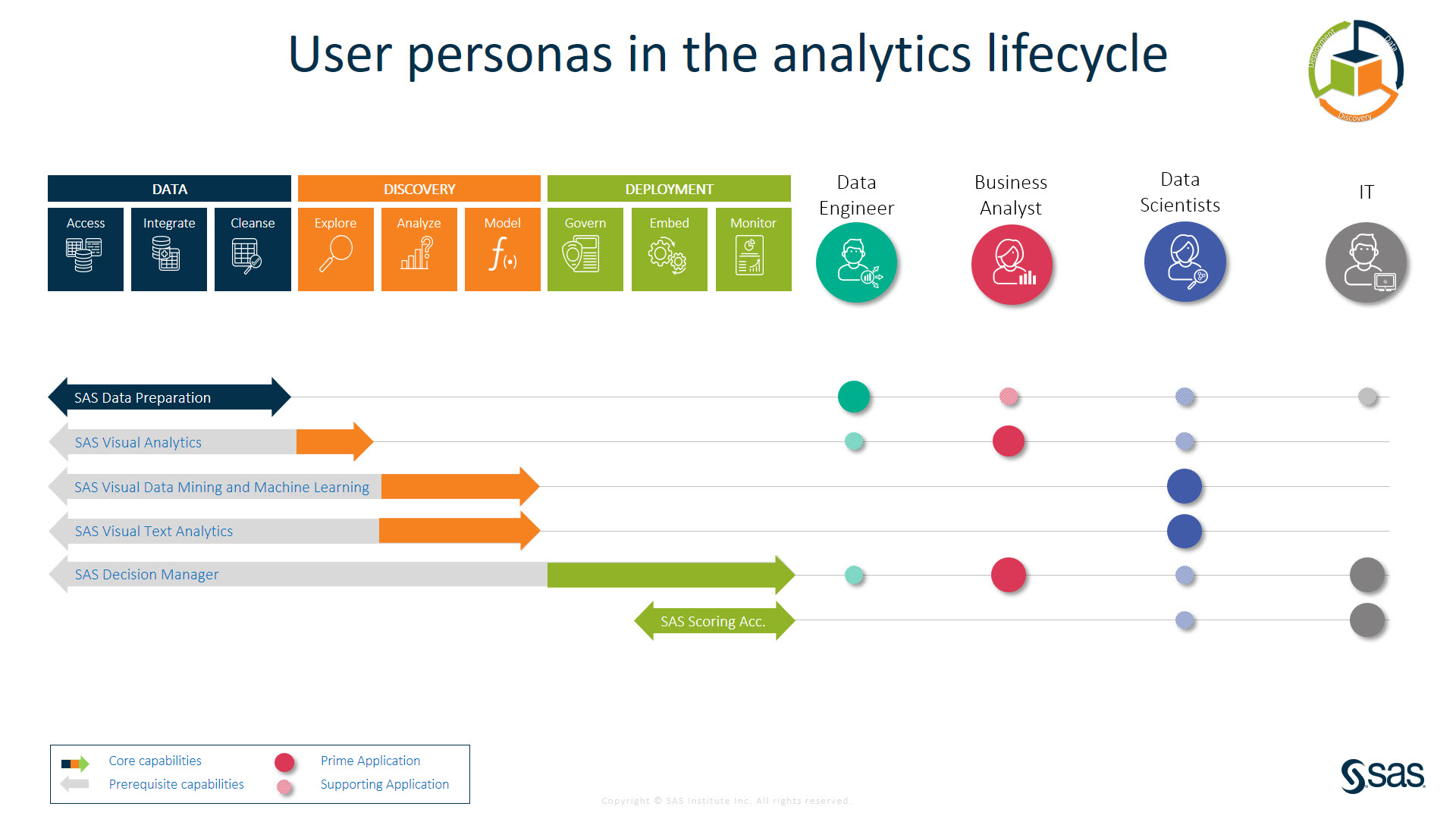We talk a lot about skills, and particularly the importance of developing new skills to enable wider and better use of analytics. What we tend to forget, however, is that it is not just on an individual basis. In other words, analytics is a team effort, drawing on a number of business and IT roles and personas across the analytics life cycle.
Analytics starts to become really useful to businesses when it enables business users to make better decisions, faster. This, however, does not happen without looking across the analytics life cycle from data to discovery to deployment. It also needs to bring together data engineers, data scientists, business analysts or users and IT staff. All four have one or more main roles and a number of supporting roles in generating insights for business use.
Understanding user personas across the analytics life cycle
Data engineers naturally have a starring role in the data section of the life cycle. Data engineers are the designers, builders and managers of the information or big data infrastructure. The other three roles, however, play a supporting part. Business users, as the data “owners” in many cases, have a responsibility for ensuring that data are correct. They, after all, are the ones most likely to spot mistakes.
Data scientists, as the most sophisticated users of data, need to be clear about what they are going to want from the data to ensure the data engineers can deliver it. Data scientists’ main role is in the “discovery” section of the life cycle, and particularly analysis and modelling. They are, in fact, the only players during those elements. They are also the only ones to play either a main or supporting role in almost every element of the life cycle, emphasising their overall importance to organisations. Data scientists are truly essential to analytics, with companies everywhere trying to work out whether to buy, borrow or build to address shortages.
Note: Special thanks to my colleague Edwin van Unen, who created this useful illustration.
Business analysts play a key role on either side of data scientists by exploring the data before analysis, then deploying the models once developed. Effectively, they free up data scientist time to focus on the analysis and modelling by doing the slightly less skilled, but still essential, work of finding out what data to use for analysis, and then putting the models into practice. They are less specialised than data scientists, but probably have a better knowledge of the business. This means they are able to identify business needs and convey those to the data scientists, then embed the models into business use.
Finally, no discussion of the analytics life cycle would be complete without considering the role of IT staff. Once the backbone of any data project, they still play both a lead and supporting role in the analytics life cycle. Their leading role is in the deployment section of the life cycle, both in embedding the models in the relevant applications and monitoring the use of the models. Their knowledge of both systems, and the organisation’s data, is key to this role because it means that they know what is possible.
There is, inevitably, a challenge: Many IT staff want things to be perfect before they are deployed. Perfect, however, is often the enemy of both adequate and good – and good or adequate may actually be all that is required to make a model usable and useful. This is where data scientists’ supporting role comes in: They need to inject a note of reality, and press for embedding and deployment of models that may not be perfect, but will be perfectly usable.
Beyond the AI hype, the question is how data-driven innovation can be brought to life. What steps are needed to move AI out of the lab and into business operations? Join SAS experts at an event near you and be inspired to lead your team in the new age of analytics.
Building a team
What is – or should be – clear from this is that businesses are very unlikely to find one single individual with all the necessary skills to cover the whole analytics life cycle. They can, however, build an extremely effective team able to cover all the required roles as either lead or supporting actors. Some individuals will be stronger in one part of the role than others, but between them, they should be able to work together to provide each other with the necessary support.
This means, in turn, that a focus on bridging functional areas may actually be more important than any individual skills. In practice, conversation and communication will be crucial to success. Being able to collaborate effectively is therefore an essential skill for all four user personas. Technical skills may be important, but soft skills also matter.
Businesses are unlikely to find one single individual with all the necessary skills to cover the whole #analytics #lifecycle.Collaboration is key, says @ReinM #Road2AI Click To Tweet
